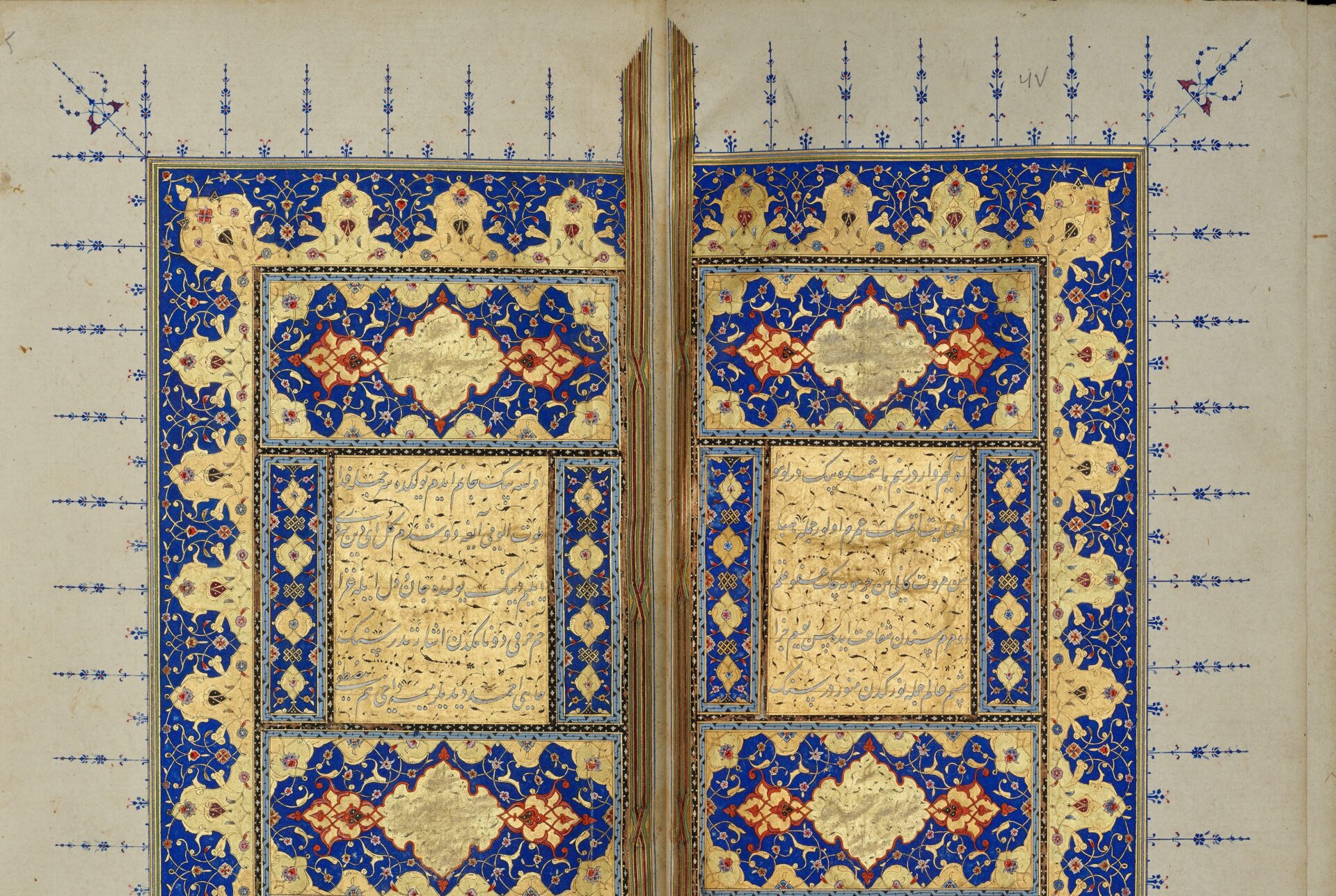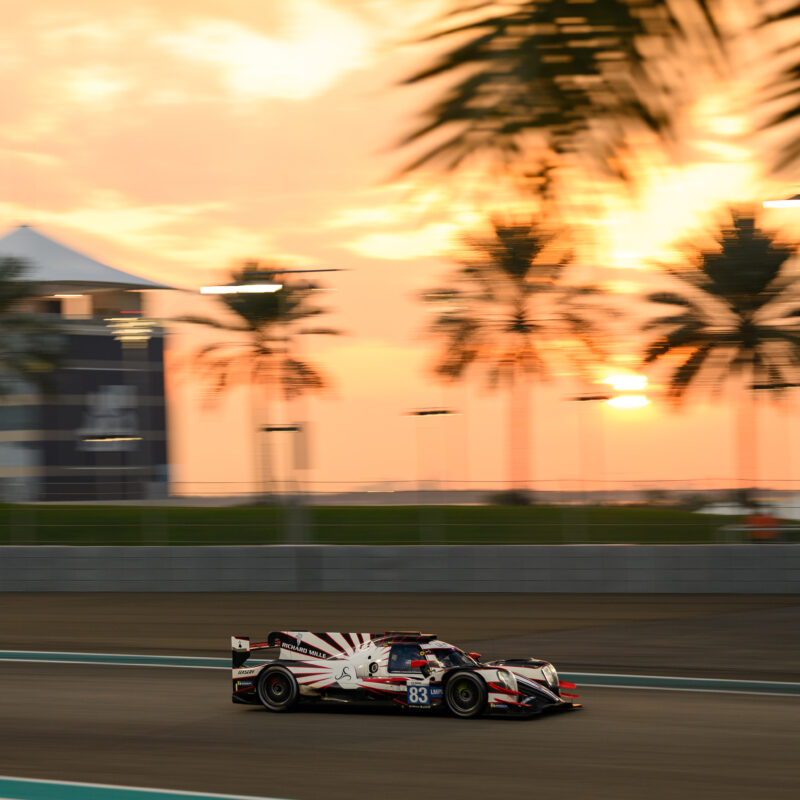
Ardon Bar-Hama
From Suleiman the Magnificent’s love poems to a ninth-century Quran
Islamic collection has room to grow at the National Library of Israel’s new $225 million building opening next month
JERUSALEM – When Israeli President Isaac Herzog made a state visit to Turkey last year, he presented President Recep Tayyip Erdoğan with an illuminated manuscript from a book of love poems composed in 1553 by Suleiman the Magnificent, the longest reigning sultan of the Ottoman empire.
The gift was a museum-quality replica of a page from the Divan-i Muhibbi, an anthology of poems written by Suleiman under the pen name Muhibbi, or “the lover.” The nearly 500-year-old manuscript – a masterpiece of Islamic literature decorated in gold leaf and intricate floral patterns – sits in the National Library of Israel and is one of five existing copies in the world.
Suleiman’s book of verse is among the jewels of the library’s collection of Islamic literature, which will become more accessible when the Jerusalem institution’s new $225 million building opens next month across the street from the Knesset, Israel’s parliament.
“We have important theological works, Sufi mystical treatises, Persian poetry, miniatures, scientific texts and mathematical texts,” Samuel Thorpe, curator of the Islamic and Middle East collection, told The Circuit. “It’s not the biggest collection in the region, but the quality is very high. There is a wealth of treasure here.”
Since the Abraham Accords were signed three years ago, normalizing Israel’s relations with the United Arab Emirates, Bahrain and Morocco, the library has sought to develop ties with its counterparts in the region. A team from the Emirates National Library and Archives visited in 2022. The director of the National Library of the Kingdom of Morocco, Mohamed Elferrane, said he will attend the opening reception in Israel Oct. 17 where the two institutions will sign a preliminary agreement on scholarly cooperation.
The Israeli library has been less successful in cultivating connections with both Egypt and Jordan. While the two countries have long-standing peace treaties with Israel, their governments have discouraged tourism to Israel and rarely authorize cultural exchanges with Israeli organizations.
The library first started building its Islamic collection in 1924 before the State of Israel was declared when Palestine was ruled by the British. At least 6,000 volumes of Arabic and Islamic scholarship were contained in the private library of Hungarian scholar Ignaz Goldziher, which was bought by the World Zionist Organization and given to the library, Thorpe said. A festive opening was held that year on the Jewish holiday of Sukkot, where Jewish, Muslim and Christian scholars expressed the hope that the library would be a place of interfaith encounter.
The Islamic collection contains more than 2,500 manuscripts, including about 100 by Yohanan Ben David, an Iranian-born Jewish manuscript dealer living in London, who donated his holdings to the library in Jerusalem. Among other items in the collection is an illuminated Quran from the ninth century and one of the world’s oldest manuscripts of “The Book of Healing,” which dates back to the 11th or 12th century and was written by the Persian philosopher and physician Abu Ali ibn Sīna, also known as Avicenna.
Over the years, the library has sought to become a bridge between Jewish and Islamic scholars, particularly in the digital realm. Included in the collection are 300,000 Arabic books and newspapers, mostly Palestinian works from the prestate period. Last year, there were 1.3 million digital entrances into the library’s Arabic website. So far in 2023, the numbers are up by 34%.
“For a while it was Saudi Arabia and Algeria, but now the Egyptians are at the top of our list,” Raquel Ukeles, the library’s director of collections, told The Circuit. “It speaks exactly to this mission of the library to be a meeting place, and if we can’t do it physically, we can do it digitally. Digital boundaries are porous.”
Amid the 4 million books, documents and artifacts housed in the new building are the “Damascus Crown,” a 1,000-year-old volume of the Hebrew Bible, and a manuscript of a commentary in the handwriting of Maimonides, the Spanish-born Jewish philosopher and physician who lived in Egypt and Morocco. There are also pieces of Israeli history that will be on display such as the first draft of the song “Jerusalem of Gold” by Naomi Shemer, and the last verses written by Hannah Senesh, the Hungarian-Jewish poet and fighter, which were found in her dress pocket on Nov. 7, 1944, the day she was executed by a Nazi firing squad.
The library’s 11-story building was designed by the Swiss architecture firm Herzog and de Meuron and contains a robotic system to deliver and reshelve books. Built from white Jerusalem stone, the building is shaped with a dramatic curved roof to evoke an open book. Among the new library’s funders are the Rothschild family’s Yad Hanadiv foundation and the Gottesman Fund, a New York-based family foundation. In front of the building is a monumental stone sculpture by Israeli artist Micha Ullman. It is based on the ancient kabbalistic text called Sefer Yetzirah (the Book of Creation) and carries the 22 letters of the Hebrew alphabet. Inside the building are works by an assortment of Israeli and international artists, including two by Marc Chagall.
The library contains an education center where a special emphasis will be placed on education in Arabic. One program, run by a team of Arabic-speaking professionals, will bring Palestinian students from East Jerusalem to the library, introducing them to the Islamic collection and teaching research skills. In the past six years, 10,000 students from schools in East Jerusalem visited the library at its location nearby on the campus of the Hebrew University.
Salai Meridor, the National Library’s chairman and a former Israeli ambassador to the U.S., told reporters on a tour of the new building last week that it will open the nation’s history to new audiences.
“I hope this place can be a bridge, and not a narrow bridge, between the past and the future,” he said.


